Sainsbury is not alone in finding that a third party delivery company had let them down. When a D'Agostino delivery driver had a run in with the NYPD the media had a field day and the reputation of the service-orientated D'Agostino, which is New York's top grocer, was badly dented.
Such stories help explain why retailers on both side of the Atlantic increasingly realise that it is not only the delivery system that is critical to getting the last mile right it is the people actually involved in making that delivery happen, whether the customer-facing drivers or the store and warehouse-confined pickers.
Ocado, for instance, is one UK online retailer to have placed a great deal of emphasis on the quality of its customer service and particularly that offered on the doorstep by its drivers. But that D'Agostino anecdote aside it is arguably in the US that the real advances are being made.
Gary Sargeant, chief operating officer of Safeway.com in the US, is currently on loan from Tesco.com in the UK. He believes many companies continue to overlook the fact that the driver is the face of the brand and thus a crucial part of the operation. "The driver can make or break a relationship and relationship' is a trust in the brand," he says. "It amazes me that customers in the US invite our drivers into their home, but not those of other services."
He's a firm believer this element should never be outsourced. In the US, customers willingly give drivers entry codes to their garage and/or home to allow them inside. Sargeant attributes this consumer confidence to very selective recruitment procedures and the fact drivers are trained to respond to all customer requests within reason. It may also be telling that about 35% of drivers in the US are women compared with about 10% in the UK.
Selecting the right sort of drivers or, for that matter, the right third party delivery people is not the only aspect of the last mile that needs to come under closer scrutiny. Other factors are also crucial, not least the fact that, whether they are in the US or UK, shoppers expect deliveries to be accurate and on time.
Some strategies will work in more than one region for instance, Sargeant drew on his experience of South Korea, where the majority of people live in apartments and two to three deliveries are made per block, to influence the delivery procedure in San Francisco.
Exchange of information between Tesco's home shopping markets has proved a huge plus. But there are some aspects that have to be tailored specifically to the particular market. The density of shoppers is higher in the UK, for instance, while travel time can be an issue in the US. Therefore, US operators have to focus on densely populated areas it is not cost effective to cover sparsely populated areas.
Safeway.com has also taken advantage of another key difference between the UK and US the lack of weight restrictions for vans in the US. At first, it shipped in three tonne vans in package form from Tesco in the UK, but now it uses five tonne vans. These hold around 15 orders (105 trays). For profitability, drivers need to make three deliveries an hour in less populated areas and four in denser zones.
The other aspect critical to the last mile is getting the picking process right. Sargeant reckons it is a huge plus that Safeway.com pickers are older than the average picker in the UK and says that turnover of pickers is four to five times higher in the UK than in the US. "Mature pickers, who on a personal level shop for themselves, tend to be better because they can identify meal solutions while picking, so if they have to make a substitution they are more likely to get it right. They also tend to remain longer with the company."
The process is designed around achieving the ultimate in productivity through use of the TeamPad as at Tesco.com. Up to six orders are picked at a time, by zone. Therefore pickers don't shop the whole store, but focus on a defined area generally based around categories. This enables them to pick an average of 125 products per hour (equal to two and a half customer orders).
Even so, would it ever be more efficient to move to a warehouse operation? Sargeant believes that in a warehouse you cannot achieve the same levels of productivity particularly when picking high volume lines. Sargeant's view is, so long as online shopping represents only 2% to 5% of a company's total sales, the store model will always win. The ability to deliver three orders an hour or more from a typical store which has a service area of 25 minutes' drive time (anything from three to 10 miles depending upon location) at low volumes of density, is significantly easier than delivering from a warehouse which, because of the need for higher order volumes, has to cover anything from 25 miles to 75 miles-plus. "The thing about instore picking is the last mile' it's so close. Profitability can be achieved with just 100 orders per week per store," says Sargeant.
Perhaps the most important component of all to fulfilment is getting the order to the customer promptly. In the US, same-day deliveries are increasingly the norm. At Safeway.com 50% of orders are received between 5pm (on the day prior to delivery) up to 10am (on the delivery day). "People simply don't shop several days ahead, so therefore we offer same-day delivery," states Sargeant. An impressive 98% of orders are delivered within the 2-hour delivery window. Timeliness is also paramount for D'Agostino's (see table), with its same-day delivery and the option of delivery within three hours.
With more groceries now being sold online than ever, the message from the US is clear: execution of the service at all touchpoints is crucial to meet the customer's demands for perfection every time. That means investing in people. Otherwise, when rushing to scale-up their online operation, retailers can all too often trip up when travelling along the last mile.
{{ANALYSIS }}
Such stories help explain why retailers on both side of the Atlantic increasingly realise that it is not only the delivery system that is critical to getting the last mile right it is the people actually involved in making that delivery happen, whether the customer-facing drivers or the store and warehouse-confined pickers.
Ocado, for instance, is one UK online retailer to have placed a great deal of emphasis on the quality of its customer service and particularly that offered on the doorstep by its drivers. But that D'Agostino anecdote aside it is arguably in the US that the real advances are being made.
Gary Sargeant, chief operating officer of Safeway.com in the US, is currently on loan from Tesco.com in the UK. He believes many companies continue to overlook the fact that the driver is the face of the brand and thus a crucial part of the operation. "The driver can make or break a relationship and relationship' is a trust in the brand," he says. "It amazes me that customers in the US invite our drivers into their home, but not those of other services."
He's a firm believer this element should never be outsourced. In the US, customers willingly give drivers entry codes to their garage and/or home to allow them inside. Sargeant attributes this consumer confidence to very selective recruitment procedures and the fact drivers are trained to respond to all customer requests within reason. It may also be telling that about 35% of drivers in the US are women compared with about 10% in the UK.
Selecting the right sort of drivers or, for that matter, the right third party delivery people is not the only aspect of the last mile that needs to come under closer scrutiny. Other factors are also crucial, not least the fact that, whether they are in the US or UK, shoppers expect deliveries to be accurate and on time.
Some strategies will work in more than one region for instance, Sargeant drew on his experience of South Korea, where the majority of people live in apartments and two to three deliveries are made per block, to influence the delivery procedure in San Francisco.
Exchange of information between Tesco's home shopping markets has proved a huge plus. But there are some aspects that have to be tailored specifically to the particular market. The density of shoppers is higher in the UK, for instance, while travel time can be an issue in the US. Therefore, US operators have to focus on densely populated areas it is not cost effective to cover sparsely populated areas.
Safeway.com has also taken advantage of another key difference between the UK and US the lack of weight restrictions for vans in the US. At first, it shipped in three tonne vans in package form from Tesco in the UK, but now it uses five tonne vans. These hold around 15 orders (105 trays). For profitability, drivers need to make three deliveries an hour in less populated areas and four in denser zones.
The other aspect critical to the last mile is getting the picking process right. Sargeant reckons it is a huge plus that Safeway.com pickers are older than the average picker in the UK and says that turnover of pickers is four to five times higher in the UK than in the US. "Mature pickers, who on a personal level shop for themselves, tend to be better because they can identify meal solutions while picking, so if they have to make a substitution they are more likely to get it right. They also tend to remain longer with the company."
The process is designed around achieving the ultimate in productivity through use of the TeamPad as at Tesco.com. Up to six orders are picked at a time, by zone. Therefore pickers don't shop the whole store, but focus on a defined area generally based around categories. This enables them to pick an average of 125 products per hour (equal to two and a half customer orders).
Even so, would it ever be more efficient to move to a warehouse operation? Sargeant believes that in a warehouse you cannot achieve the same levels of productivity particularly when picking high volume lines. Sargeant's view is, so long as online shopping represents only 2% to 5% of a company's total sales, the store model will always win. The ability to deliver three orders an hour or more from a typical store which has a service area of 25 minutes' drive time (anything from three to 10 miles depending upon location) at low volumes of density, is significantly easier than delivering from a warehouse which, because of the need for higher order volumes, has to cover anything from 25 miles to 75 miles-plus. "The thing about instore picking is the last mile' it's so close. Profitability can be achieved with just 100 orders per week per store," says Sargeant.
Perhaps the most important component of all to fulfilment is getting the order to the customer promptly. In the US, same-day deliveries are increasingly the norm. At Safeway.com 50% of orders are received between 5pm (on the day prior to delivery) up to 10am (on the delivery day). "People simply don't shop several days ahead, so therefore we offer same-day delivery," states Sargeant. An impressive 98% of orders are delivered within the 2-hour delivery window. Timeliness is also paramount for D'Agostino's (see table), with its same-day delivery and the option of delivery within three hours.
With more groceries now being sold online than ever, the message from the US is clear: execution of the service at all touchpoints is crucial to meet the customer's demands for perfection every time. That means investing in people. Otherwise, when rushing to scale-up their online operation, retailers can all too often trip up when travelling along the last mile.
{{ANALYSIS }}








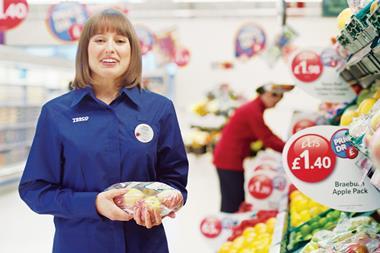


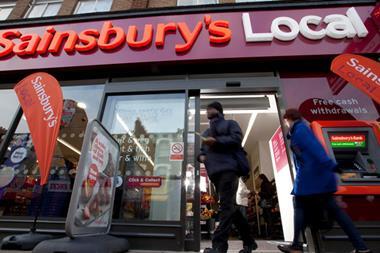



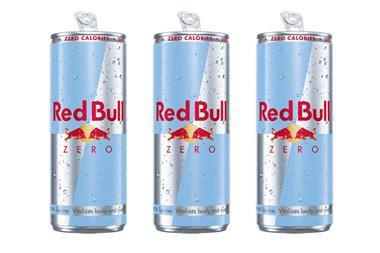
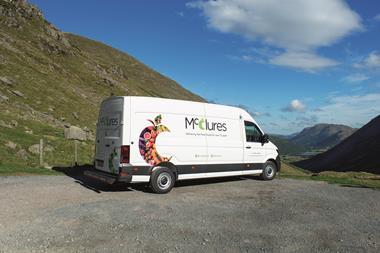

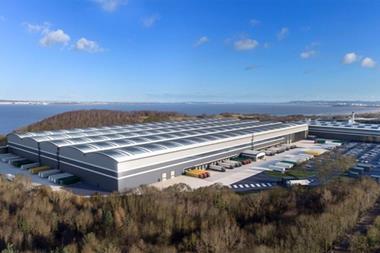
No comments yet